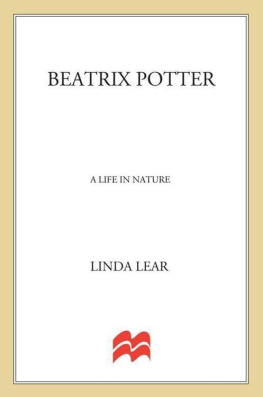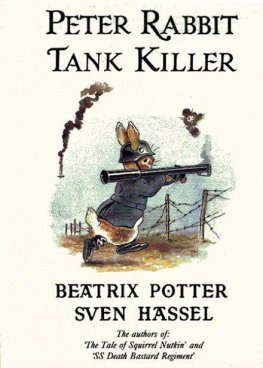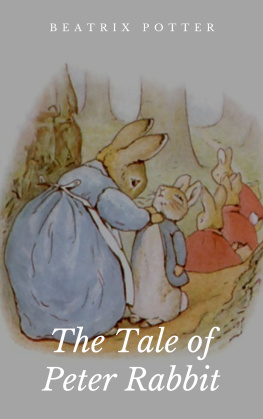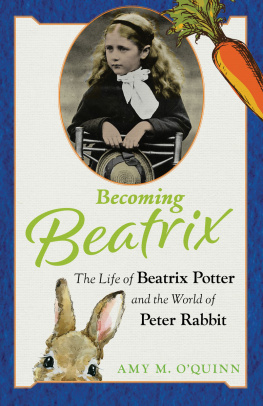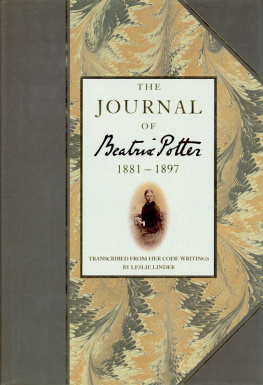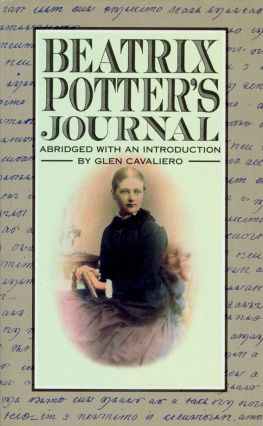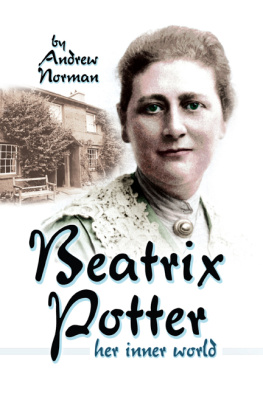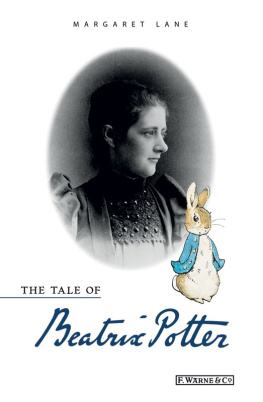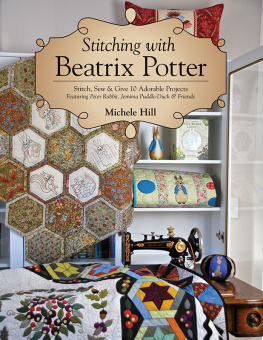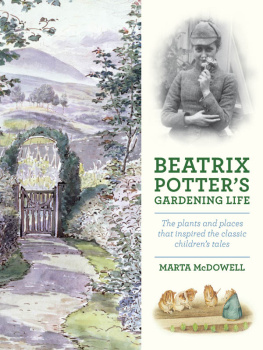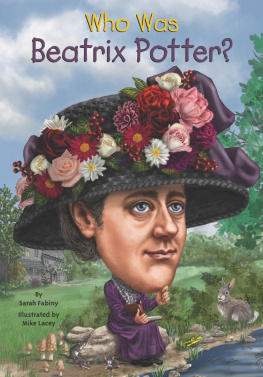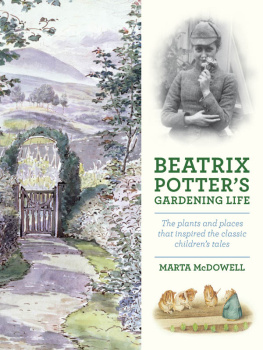Ownership
Near Sawrey, Lancashire
I T WAS A COLD, WET November day in 1918. The frosty air had settled just above the lake. Soon it would be dark. Through the gloom the figure of a woman could just be made out. She was on her hands and knees scrabbling about in the stubble of the harvested cornfield, searching for something. Close up she was a handsome woman with noticeably high colour in her cheeks, deep-set brilliant blue eyes and unruly brown hair pulled back haphazardly from her face. Her somewhat rounded frame was mostly hidden by several layers of outerwear. She wore a long, coarse wool jacket, wool stockings, and serviceable clogs as defence against the chill.
The woman was Mrs William Heelis, the former Beatrix Potter, the acclaimed creator of The Tale of Peter Rabbit, and the author and illustrator of over twenty other little books for children. At 52 she was a happily married woman of five years and a successful landowner and country farmer of more than a decade. But just now she was desperately searching for the ring that Norman Warne, once her editor and publisher, had given her a month before he died and which she had worn every day for the past thirteen years as a treasured remembrance. It had slipped off her cold fingers while she was helping the hired men lift the heavy sheaves of bundled corn. She had already untied many on the threshing floor in hopes of finding it there, but now she was back in the field searching one more time before the light completely faded.
Suddenly she saw it, a simple gold ring among the wet stuff they had thrown down for the hens. I am glad I was spared that last crowning distress of a most disastrous harvest, she wrote to Normans sister a few days later. I should have had just one consolation, it was a pretty, quiet sheltered field to lie in, if it had not been found. My hand felt very strange & uncomfortable without it. The near-loss of Normans ring reminded Beatrix once again of how sad she had been when she had purchased Hill Top Farm in the autumn of 1905, and how much her life had changed.
Near Sawrey was still a hamlet when Helen Beatrix Potter, a 39-year-old spinster from London, became the unlikely owner of Hill Top. The seventeenth-century farm sits back from the road on the eastern edge of the quiet, peaceful village a place that looks like artists country. A few other farms, some scattered whitewashed cottages and the grandly named Tower Bank Arms stood, then as now, fronting fields that slope down to the shore of Esthwaite Water, one of the prettiest of the smaller lakes. Framing this soft hilly country are the Tilberthwaite Fells, and beyond them loom the Langdale Pikes.
Near Sawrey and its sister village, Far Sawrey, are distinguished by their proximity to the ancient market town of Hawkshead. Both sit upon the narrow strip of farmland between Esthwaite Water and the western shore of Windermere, in the township of Claife, now part of Cumbria but until rather recently the northern tip of Lancashire. There was no nationally protected Lake District Park, only a barely identifiable geographic region in the corner of north-west England, made famous in the early nineteenth century by a group of Romantic poets. Their literary celebration of the virtues of rural solitude ironically increased the number of tourists and off-comers who discovered the mesmerizing beauty of the English Lakes. By mid-century the Romantic idyll was over. But in tiny hamlets like Near Sawrey, life went on much as it always had.
My purchase seems to be regarded as a huge joke, Beatrix wrote to Normans brother, Harold Warne, her editor at Frederick Warne & Co. It was early October 1905, just after she had arrived at the farm. I have been going over my hill with a tape measure. But there was little she could do to mitigate the scepticism of her Sawrey neighbours. It was commonly known that Miss Potter had paid nearly twice as much for her thirty-four-acre farm as the previous owner a fact Beatrix herself would not discover until it was too late to renegotiate the price. Buying Hill Top Farm had been her first independent business decision, paid for mostly with her own money. Her subsequent embarrassment at the inflated price was a painful lesson. In the future she would do her homework more carefully, and have a local solicitor to advise her. But nothing could diminish her joy at owning her own property.
It is impossible to know when Beatrix Potter first came upon Near Sawrey. It may have been as early as the summer of 1882 when, at the age of 16, she walked over to the market town of Hawkshead from Wray Castle on the shore of Windermere. She recorded then, Had a series of adventures. Inquired the way three times, lost continually, alarmed by collies at every farm, stuck in stiles, chased once by cows. She had noted the architectural details of Hawksheads buildings: the handsome Norman church with its fine oak carving, and the little Quaker Meeting House at nearby Colthouse whose door opened with a huge iron key. Several days later, Beatrix joined her parents and their guest, the orator John Bright, for a drive around Esthwaite Water. On their way around the lake they certainly passed through the tiny hamlet.
Over the next decade, the wealthy Potter family frequently came to the Lake District on holiday. They spent a number of summers at Lingholm and Fawe Park, two large estates on the western shore of Derwentwater near Keswick, and some at Holehird, a mansion with expansive grounds perched high above Windermere. No matter where the family stayed, Beatrix explored the surrounding countryside. During a holiday in the Scottish lowlands in 1892, an area she had known and loved since childhood, she was reminded of the little English village of Near Sawrey. I prefer a pastoral landscape backed by mountains, she wrote, even after a drive along the scenic Braan. I have often been laughed at for thinking Esthwaite Water the most beautiful of the Lakes. It really strikes me that some scenery is almost theatrical, or ultra-romantic. Owing partly to their daughters enthusiasm for Near Sawrey, the Potters decided to lease Lakefield just outside the village in 1896.
That long summer holiday allowed Beatrix to become well acquainted with the village, its cottages, shopkeepers and children, the countryside around Esthwaite Water, and especially with the neighbouring Hill Top Farm. There was something beautiful, something that pleased her senses everywhere she went. From the garden terrace of Lakefield the fields seem to fold down upon themselves to the edge of the lake. The light was never once the same on the hills opposite. It was a view that always captivated her and one which she would paint in every season.
Beatrix celebrated her thirtieth birthday in Sawrey that summer, noting the passage with some pleasure. I feel much younger at thirty than I did at twenty; firmer and stronger both in mind and body, she wrote, obviously relishing her time there and feeling inwardly renewed. A perfect, hot summer day, cloudless until evening when it rolled up like thunder round How Fell. Walking home after tea with some young cousins, she remarked upon the very pleasant evening-light, and village people up and down the road and in the flowery little gardens. Perhaps this was also the summer she determined to buy property there one day, but whenever it was, her deep contentment in Near Sawrey created an indelible memory.

